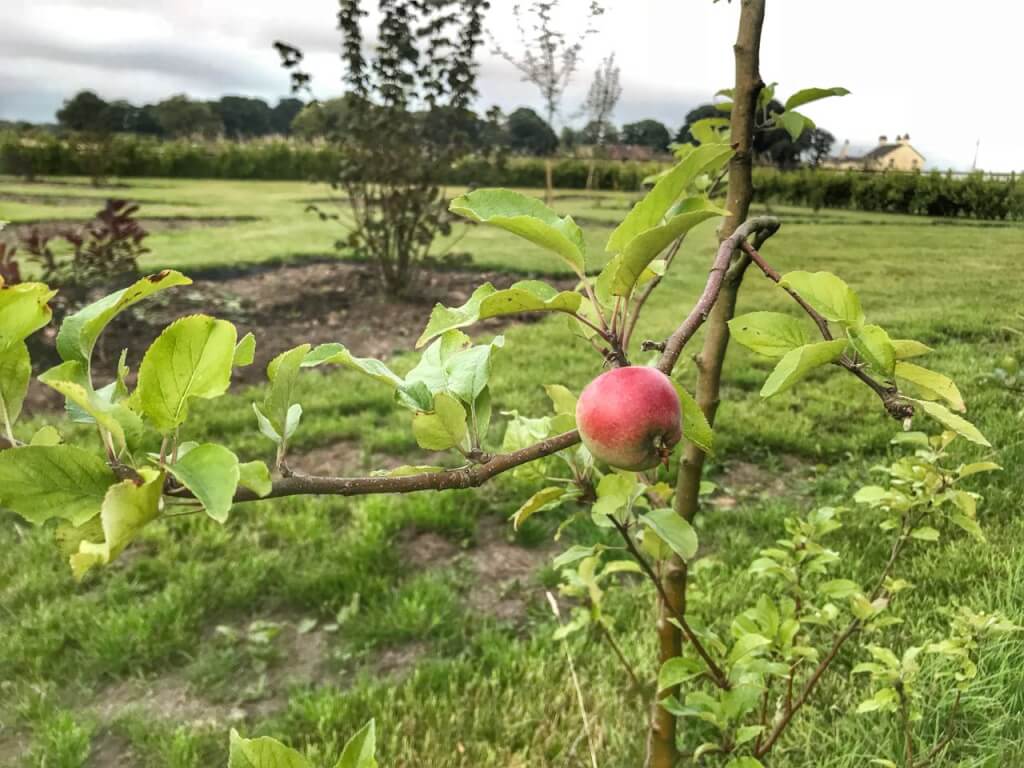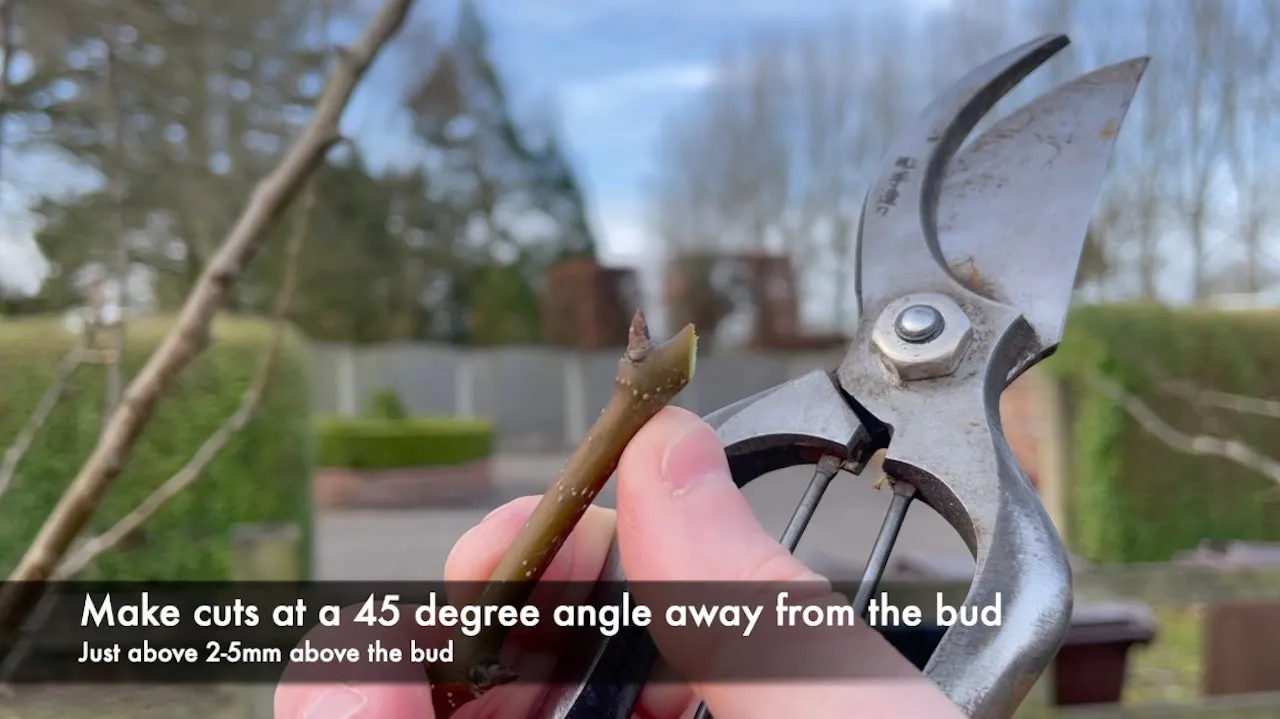Hi @jon
Great question on feathered maiden fruit trees and how to prune them! Your feathered maiden is usually a 2-3-year-old single stem tree with very little side growth; this is for ease of transport and to enable gardeners to prune these into their preferred shapes, such as standard, espaliers or pleached trees. They are the starting point of all fruit tree shapes!
Let me first explain the different terms for young trees, which may help other Garden Ninjas to differentiate.
-
Maiden
A maiden is a young tree, usually one-year-old, that has not been pruned or trained. It consists of a single stem with no side branches. Maidens are ideal if you want to shape the tree yourself, as they provide the most flexibility for training and pruning into different forms such as a bush, espalier, or standard tree.
-
Whip
A whip is very similar to a maiden, often referring to the same type of young tree. It is a single, straight stem without any side branches. Whips are typically around 60-90 cm (2-3 feet) tall. They are often used for hedging or when planting young trees in orchards or reforestation projects.
-
Feathered Whip or Maiden Tree
A feathered tree is slightly older, usually 2-3 years old, and has a central stem with evenly spaced lateral branches from the base upwards. These lateral branches are referred to as "feathers." Feathered trees are great for creating natural-looking tree shapes and are often used in landscaping and garden design.
-
Standard Tree
A standard tree has a clear, straight trunk (usually around 1.8-2 meters or 6-7 feet) before the canopy begins. The trunk is clean of branches up to a specified height, with a well-developed crown of branches on top. Standard trees are commonly used for avenues, street planting, or as feature trees in gardens.
-
Half-Standard Tree
Half-standard trees are similar to standard trees but have a shorter clear trunk, usually around 1-1.2 meters (3-4 feet). These trees are ideal for smaller gardens or where a lower canopy is desired.
-
Pleached Tree
Pleached trees are trained along a square or rectangular frame, creating these Lego-style trees. Great for modern and contemporary gardens.
-
Multi-Stem Tree
Multi-stem trees are trained to develop multiple stems from the base. These create a natural, architectural look and are often used as statement plants in landscape design. Birch and Amelanchier are common examples of trees often grown in this form.
-
Coppiced or Pollarded Tree
These trees have been pruned back hard either to the base (coppiced) or at a higher level (pollarded) to encourage vigorous new growth. This technique is often used for woodland management or to maintain smaller, manageable sizes for trees in gardens and urban areas.

How to prune young fruit trees or whips
The key with young 1-3 year old fruit trees is to prune apples and pears in winter and cherries like plums in late summer. This is formative pruning to help shape them.
The reason why your new tree isn't sending out any growth is that you've not pruned it to DIRECT THE GROWTH. Pruning dictates where growth hormone and 'go juice' goes in a tree. If left unpruned, the tree will keep growing long and thin before finally putting out some sideways or lateral growth. If you imagine the tree wants to grow up and out of any shade from other trees, so upwards is the first order, and then outwards.

By pruning just above a sideways bud, we force energy downwards and to these laterals, which is how we shape fruit trees to produce easily accessible blossom, which then turns into fruit.
As brutal as it sounds, you need to take off 1/3 of the top growth just above a bud to force the tree to branch out. Having been root-bound won't affect it that much, but a lack of pruning will!
Watch my pruning guide below for more help!
https://youtu.be/jQUHwhhOPKM
All the best
Lee Garden Ninja
Hi @jon
Great question on feathered maiden fruit trees and how to prune them! Your feathered maiden is usually a 2-3-year-old single stem tree with very little side growth; this is for ease of transport and to enable gardeners to prune these into their preferred shapes, such as standard, espaliers or pleached trees. They are the starting point of all fruit tree shapes!
Let me first explain the different terms for young trees, which may help other Garden Ninjas to differentiate.
-
Maiden
A maiden is a young tree, usually one-year-old, that has not been pruned or trained. It consists of a single stem with no side branches. Maidens are ideal if you want to shape the tree yourself, as they provide the most flexibility for training and pruning into different forms such as a bush, espalier, or standard tree.
-
Whip
A whip is very similar to a maiden, often referring to the same type of young tree. It is a single, straight stem without any side branches. Whips are typically around 60-90 cm (2-3 feet) tall. They are often used for hedging or when planting young trees in orchards or reforestation projects.
-
Feathered Whip or Maiden Tree
A feathered tree is slightly older, usually 2-3 years old, and has a central stem with evenly spaced lateral branches from the base upwards. These lateral branches are referred to as "feathers." Feathered trees are great for creating natural-looking tree shapes and are often used in landscaping and garden design.
-
Standard Tree
A standard tree has a clear, straight trunk (usually around 1.8-2 meters or 6-7 feet) before the canopy begins. The trunk is clean of branches up to a specified height, with a well-developed crown of branches on top. Standard trees are commonly used for avenues, street planting, or as feature trees in gardens.
-
Half-Standard Tree
Half-standard trees are similar to standard trees but have a shorter clear trunk, usually around 1-1.2 meters (3-4 feet). These trees are ideal for smaller gardens or where a lower canopy is desired.
-
Pleached Tree
Pleached trees are trained along a square or rectangular frame, creating these Lego-style trees. Great for modern and contemporary gardens.
-
Multi-Stem Tree
Multi-stem trees are trained to develop multiple stems from the base. These create a natural, architectural look and are often used as statement plants in landscape design. Birch and Amelanchier are common examples of trees often grown in this form.
-
Coppiced or Pollarded Tree
These trees have been pruned back hard either to the base (coppiced) or at a higher level (pollarded) to encourage vigorous new growth. This technique is often used for woodland management or to maintain smaller, manageable sizes for trees in gardens and urban areas.

How to prune young fruit trees or whips
The key with young 1-3 year old fruit trees is to prune apples and pears in winter and cherries like plums in late summer. This is formative pruning to help shape them.
The reason why your new tree isn't sending out any growth is that you've not pruned it to DIRECT THE GROWTH. Pruning dictates where growth hormone and 'go juice' goes in a tree. If left unpruned, the tree will keep growing long and thin before finally putting out some sideways or lateral growth. If you imagine the tree wants to grow up and out of any shade from other trees, so upwards is the first order, and then outwards.

By pruning just above a sideways bud, we force energy downwards and to these laterals, which is how we shape fruit trees to produce easily accessible blossom, which then turns into fruit.
As brutal as it sounds, you need to take off 1/3 of the top growth just above a bud to force the tree to branch out. Having been root-bound won't affect it that much, but a lack of pruning will!
Watch my pruning guide below for more help!
All the best
Lee Garden Ninja
 Lee Burkhill: Award Winning Designer & BBC 1's Garden Rescue Presenters Official Blog
Lee Burkhill: Award Winning Designer & BBC 1's Garden Rescue Presenters Official Blog



